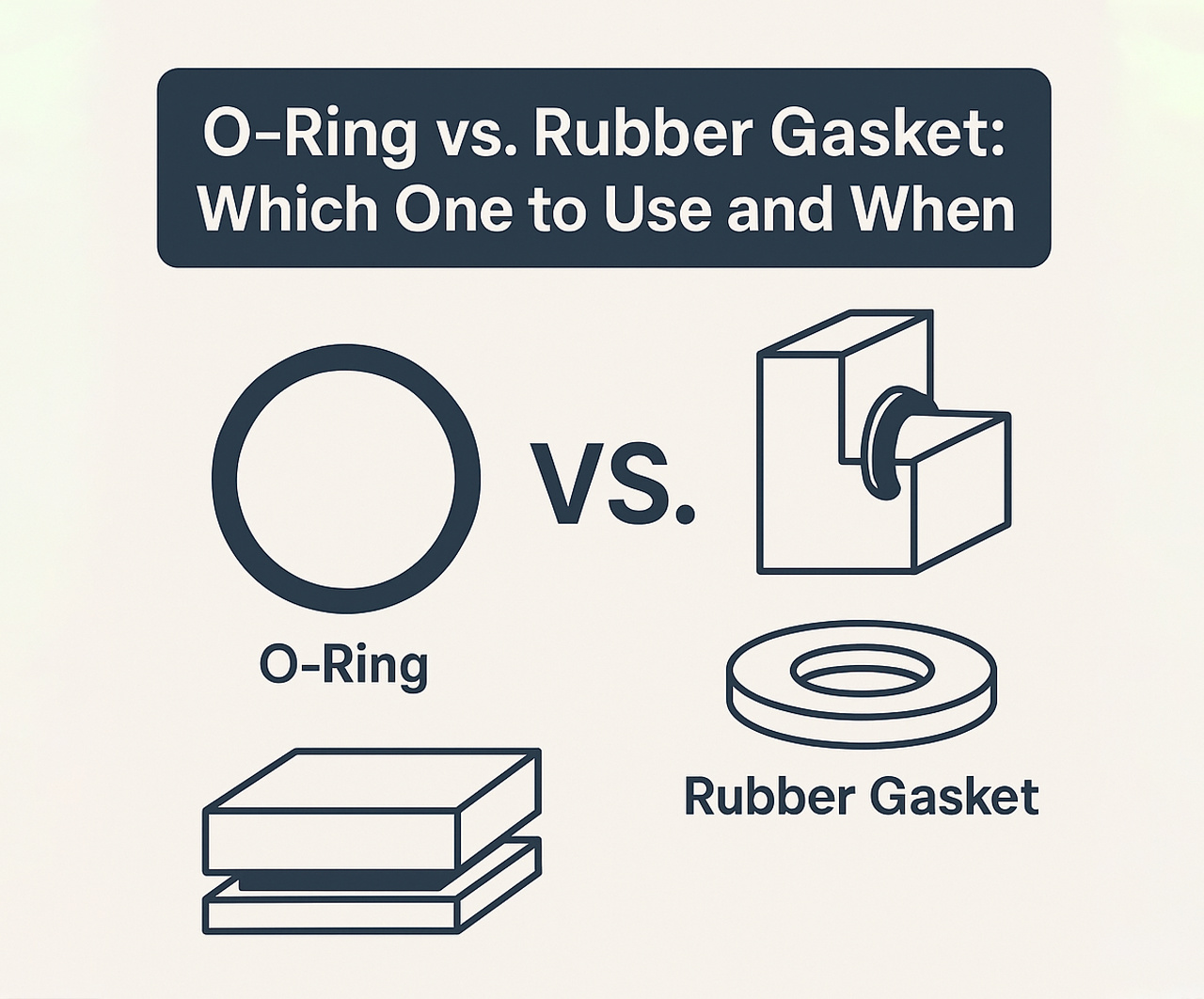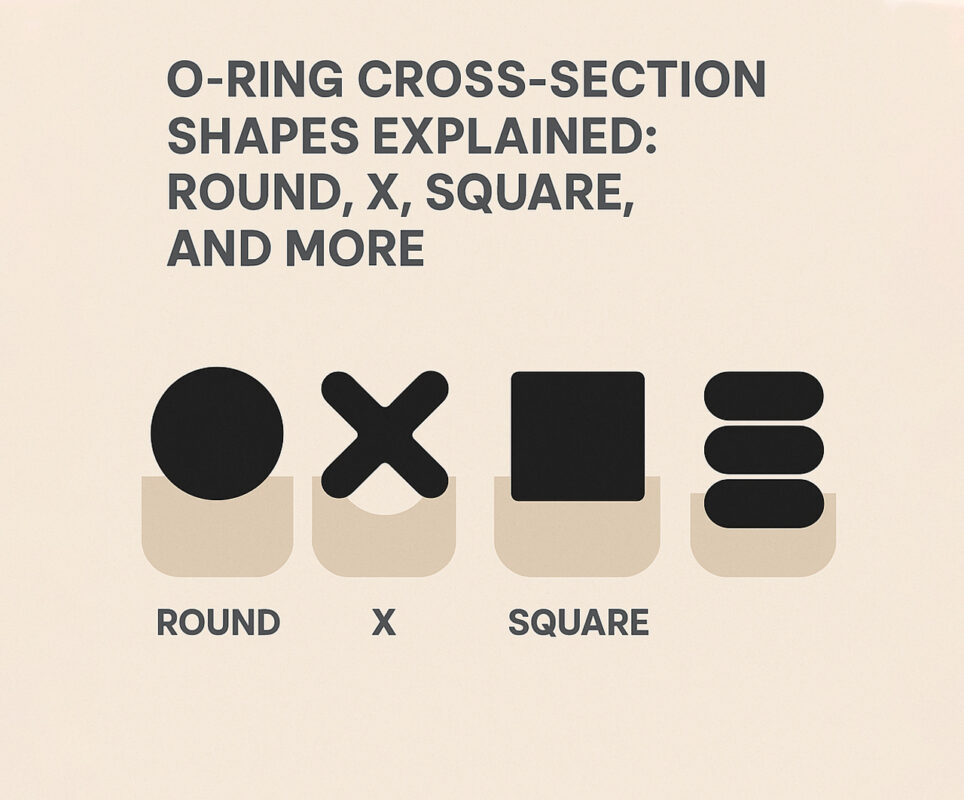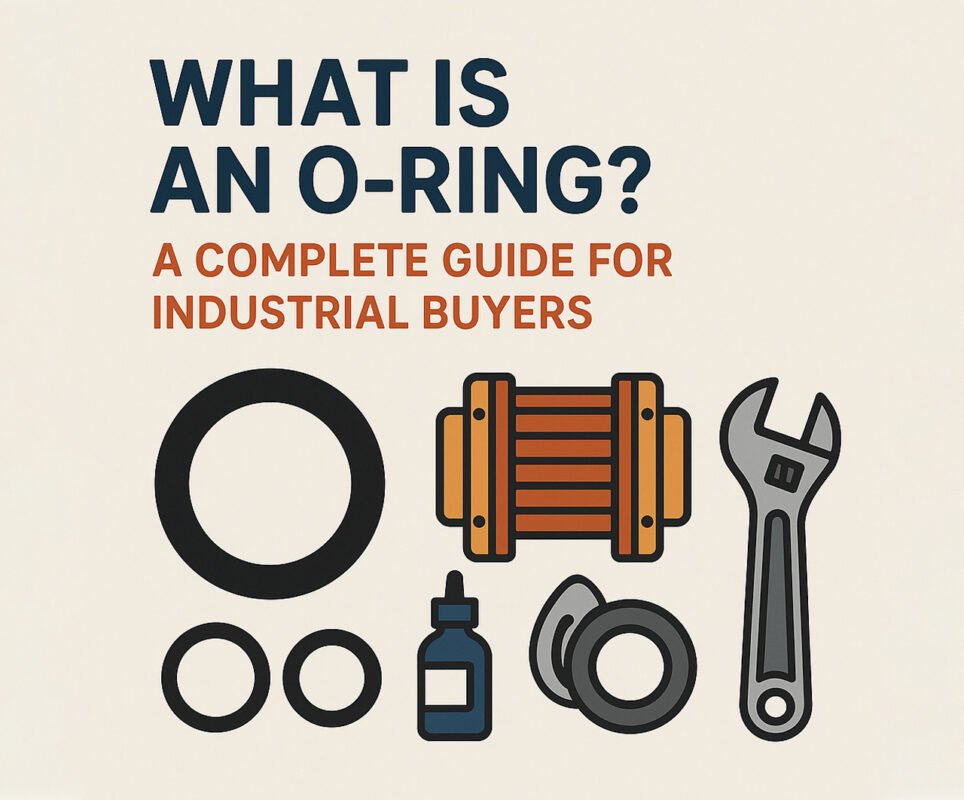When it comes to creating a tight, leak-proof seal in mechanical systems, engineers are often faced with the decision: metal O rings, orings and seals, or a rubber gasket seal? These components might seem similar at first glance, but they serve very different purposes based on material, shape, application environment, and sealing mechanics. Understanding their differences is crucial for selecting the right solution in industrial, automotive, medical, and aerospace systems. Know more..
Defining the Basics
Let’s start with a clear breakdown of the terms:
- O-rings: Circular, donut-shaped seals typically made of elastomer, silicone, or metal. They’re designed to sit in a groove and be compressed between two surfaces.
- Rubber gasket seal: A flat piece of rubber (or rubber-based material) cut to fit between two surfaces to prevent leakage. Gaskets are often used when surfaces don’t have machined grooves.
- Metal O rings: High-performance O-rings made from materials like stainless steel, Inconel, or other alloys. Often used in high-pressure, high-temperature, or chemically aggressive environments.
Together, these components form a broad category we often refer to as orings and seals.
How They Work
- O-rings seal by deformation. When squeezed in a groove between two surfaces, the metal O ring or elastomeric ring forms a barrier against liquid or gas escape.
- Rubber gasket seals work by creating a surface-to-surface seal under compression. The flat rubber deforms to fill surface irregularities.
When to Use an O-Ring
O-rings are generally best when:
- There is a precisely machined groove
- The system operates under pressure
- You need a compact, round seal
- You want easy installation and replacement
Metal O rings, in particular, are preferred when:
- Temperatures exceed 260°C
- Chemical resistance is vital
- You’re sealing under vacuum or very high pressure
Common use cases include:
- Hydraulic systems
- Aerospace fuel and fluid lines
- Cryogenic equipment
- Ultra-high vacuum chambers
When to Use a Rubber Gasket Seal
Rubber gaskets are the go-to solution when:
- The mating surfaces are large and flat
- You need to seal flanges or enclosures
- No groove is available for an O-ring
- Surface irregularities need to be filled
Typical applications:
- Engine valve covers
- HVAC ducting
- Flange connections in pipelines
- Electrical enclosures and panels
Material Matters
Both metal O rings and rubber gasket seals come in a variety of materials. Choosing the right one is essential for performance and longevity.
For O-Rings:
- Nitrile (Buna-N): Good for oil and fuel applications
- Silicone: Excellent for high-temperature and medical-grade applications
- Viton: High chemical and heat resistance
- Metal O rings (stainless steel, Inconel): For extreme conditions
For Rubber Gasket Seals:
- Neoprene: General-purpose sealing
- EPDM: Great for water and steam
- Silicone: FDA-compliant, temperature resistant
- Graphite-reinforced rubber: For high pressure/temperature flanges
Performance Comparison: O-Ring vs. Gasket
| Feature | O-Ring | Rubber Gasket Seal |
| Sealing Pressure | Excellent (especially metal O rings) | Moderate |
| Installation | Requires groove | Can seal flat surfaces |
| Compression Set | Low (especially in orings and seals) | Can be high |
| Material Options | Broad (including metal O rings) | Broad |
| Reusability | Limited (except some metal O rings) | Often reusable |
| Size Customization | Less flexible | Easy to custom cut |
Unique Advantages of Metal O Rings
Metal O rings are not just for extreme environments—they bring clear advantages:
- Spring-back performance: Unlike rubber, metal returns to its original shape.
- Excellent in cyclic applications: Withstand repeated pressurization.
- Durability: Lasts longer under harsh conditions.
- Temperature range: Up to 1000°C depending on alloy.
They’re widely used in rocket engines, reactor containment systems, and subsea equipment where failure is not an option.
Customization and Advanced Designs
The evolution of orings and seals now includes:
- Coated metal O rings: For improved sealing and reduced galling
- Hollow-core metal O rings: Enhanced spring-like behavior
- Laminated gaskets: Combine rubber with metal or fabric layers
These new designs give engineers unprecedented flexibility in sealing design.
Creative Applications
1. Medical Devices
FDA-grade orings and seals are used in drug pumps and sterilizers. Metal O-rings ensure inert sealing in implantable devices.
2. Spacecraft Fuel Systems
Only metal O rings can handle the thermal shock, vacuum, and fuel resistance required.
3. Industrial Robotics
Moving joints are sealed with O-rings for flexibility and precision; rubber gasket seals are used in the controller housing.
4. Battery Energy Storage
Gaskets and O-rings seal battery enclosures from moisture while allowing internal pressure equalization.
Installation Tips
For orings and seals:
- Ensure the groove is clean and free of burrs
- Use lubrication to ease installation (unless prohibited by application)
- Avoid twisting during placement
For rubber gasket seals:
- Make sure the flange surface is smooth
- Use uniform bolt tightening to avoid pinch or extrusion
- Select the correct thickness for compression
Failure Modes and Prevention
O-Ring Failures:
- Extrusion: Use back-up rings or higher durometer material
- Thermal degradation: Use materials with appropriate temperature range
- Over-compression: Ensure groove dimensions match specs
Rubber Gasket Failures:
- Cold flow: Caused by over-tightening or prolonged compression
- Chemical attack: Select chemically compatible material
- Surface mismatch: Use thicker gaskets to fill gaps
Preventive inspection and proper material selection can extend life significantly.
Final Thoughts: Choosing the Right Seal
The choice between a rubber gasket seal and an O-ring, especially metal O rings, comes down to pressure, temperature, surface design, and environment. If you’re working in extreme conditions with high reliability needs, metal O rings are the superior choice. For more flexible, general-use sealing, rubber gasket seals provide ease of use and adaptability.
And in many systems, it’s not a question of one or the other—both are used together to optimize performance. As orings and seals evolve, they continue to power everything from satellites to smartphones, proving that even the smallest components can make the biggest difference.




